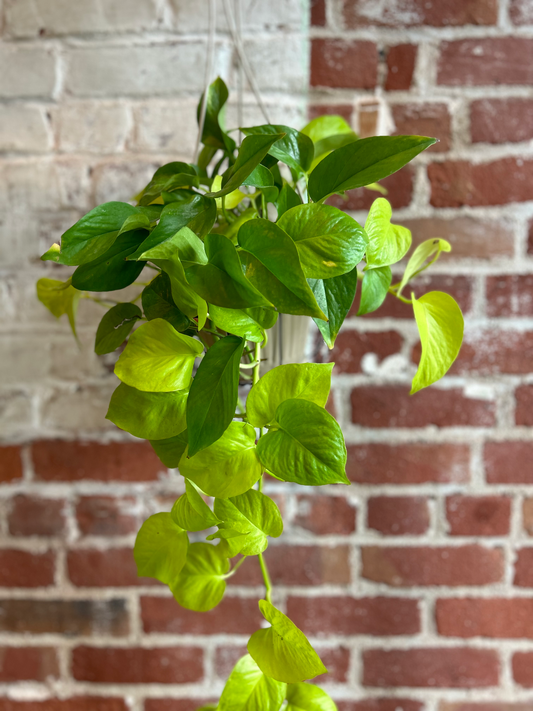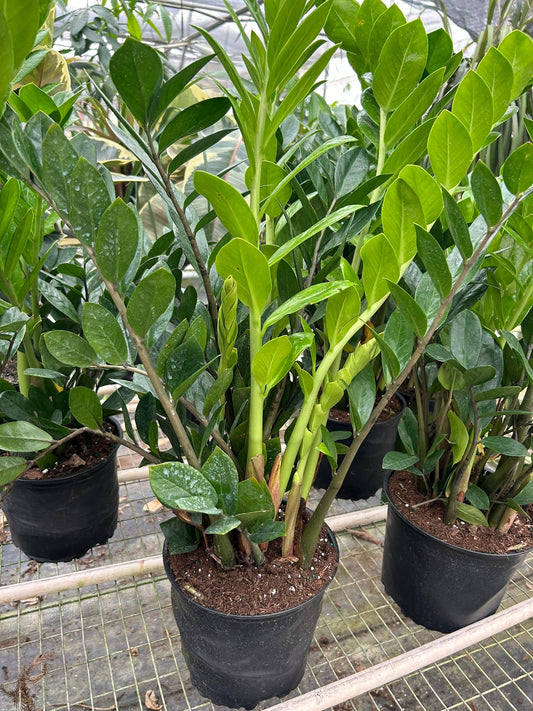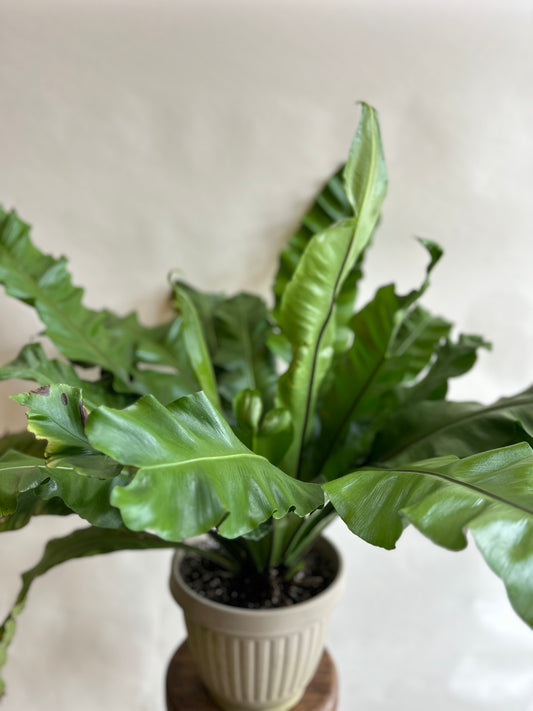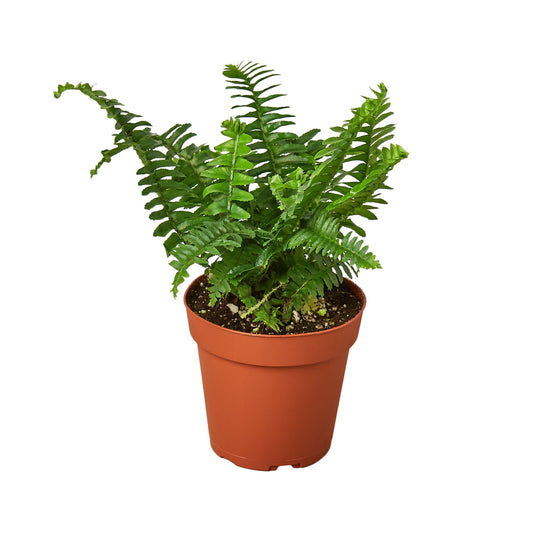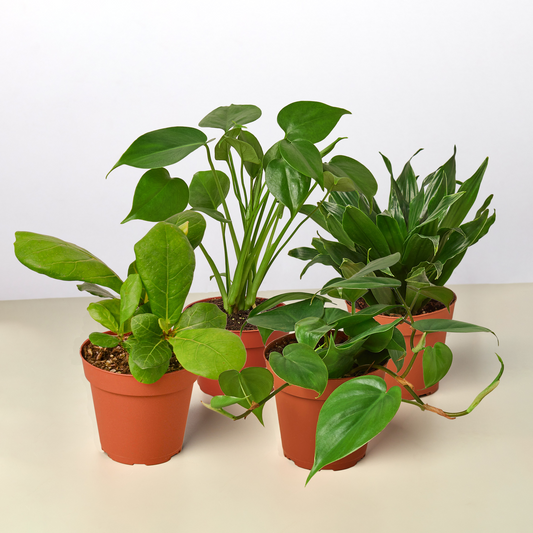Are Philodendron Gloriosums Toxic to Cats?
Cafe Planta Team
Plants add charm to any home, but not all of them are friendly to our furry companions. If you're a cat owner with a love for houseplants, you might be wondering about the safety of your leafy friends around your feline buddies. One plant that's been catching eyes and raising questions is the Philodendron Gloriosum.
This article will explore whether Philodendron Gloriosums are toxic to cats. We'll dive into the specifics of what makes a plant toxic, how you can tell if your cat is affected, and practical tips for keeping your curious kitty safe while still enjoying your green space.
Understanding Philodendron Gloriosum
Philodendron Gloriosum is a stunning tropical plant known for its large, velvety leaves. These beauties are native to Colombia and are part of the Araceae family. With their heart-shaped leaves and striking white veins, they make a statement in any indoor garden.
These plants are typically grown for their foliage, as their flowers are less showy. Their lush leaves can grow quite large, making them a centerpiece in many plant collections. But while they might be a delight to the eyes, they can pose a risk to pets.
Philodendron Gloriosum contains calcium oxalate crystals, which are insoluble and can cause irritation when ingested. This is the primary reason they're considered toxic to cats and other small animals. When chewed or swallowed, these crystals can lead to unpleasant symptoms.
Why Are Philodendrons Toxic to Cats?
The culprit behind the toxicity of Philodendron Gloriosum, as with many other houseplants, is calcium oxalate crystals. These tiny, needle-like crystals are found in the plant's tissue. While they serve a purpose for the plant, they're not so friendly to animals or humans.
When a cat chews on a Philodendron leaf, the crystals are released, and they can irritate the tissues of the mouth and gastrointestinal tract. This irritation is what leads to the symptoms associated with ingestion.
Some common symptoms of exposure to calcium oxalate crystals include:
- Drooling
- Oral irritation
- Difficulty swallowing
- Vomiting
- Decreased appetite
It's important to note that while these symptoms can be distressing, they're usually not life-threatening. However, any plant ingestion should be taken seriously, especially if your cat shows signs of distress.
What to Do If Your Cat Eats a Philodendron
Accidents happen, and sometimes our curious kitties can't resist a nibble. If you suspect your cat has ingested part of a Philodendron Gloriosum, it's important to act quickly but calmly.
First, remove any plant material from your cat's mouth and wipe away any plant residue. Offer your cat some water to help rinse their mouth. Keep an eye on your pet and monitor them for symptoms.
If you notice any of the following, it's time to contact your vet:
- Excessive drooling or pawing at the mouth
- Vomiting
- Swelling of the mouth or tongue
- Difficulty breathing or swallowing
Your vet may recommend bringing your cat in for an examination, especially if the symptoms are severe. In some cases, they might provide treatments to help ease the discomfort or prevent further complications.
Preventing Plant Poisoning in Cats
Prevention is better than cure, as they say. Keeping your feline friend safe from potentially toxic plants involves a bit of planning and vigilance. Here are some practical tips to keep your cat safe:
- Place plants out of reach: High shelves or hanging planters can keep curious cats away from your plants.
- Use deterrents: Bitter sprays or plant guards can discourage your cat from nibbling on leaves.
- Create a cat-friendly zone: Provide your cat with their own safe plants, like cat grass or catnip, to satisfy their curiosity.
- Educate yourself: Know which plants in your home are toxic and take appropriate measures to keep them out of reach.
By taking these steps, you can enjoy your houseplants without compromising the safety of your pets.
Choosing Cat-Friendly Plants
If you're a plant lover with a cat at home, you might want to consider filling your space with pet-friendly plants. There are plenty of beautiful options that are non-toxic to cats:
- Spider Plant (Chlorophytum comosum): These are easy to care for and safe for cats.
- Boston Fern (Nephrolepis exaltata): A lush, green option that poses no threat to your furry friends.
- Bamboo Palm (Chamaedorea seifrizii): These add a tropical feel without the worry of toxicity.
- Areca Palm (Dypsis lutescens): Another safe and attractive option for plant-loving cat owners.
Switching to pet-friendly plants can give you peace of mind and still allow you to enjoy the beauty and benefits of indoor gardening.
Balancing Plant and Pet Care
Having houseplants and pets together is like juggling two different sets of needs. But with a little effort, you can create a harmonious environment for both.
Start by doing a bit of research on each plant you bring into your home. Knowing which plants are safe and which ones are toxic can help you make informed decisions. Additionally, consider your cat's behavior. If they tend to chew on things, you might need to be more proactive in keeping plants out of reach.
Also, provide alternative enrichment for your cat. Toys, scratching posts, and interactive play can keep them busy and less interested in your plants.
Remember, it's all about creating a balanced space where both your plants and pets can thrive.
Understanding Your Cat's Behavior
Cats are naturally curious creatures, and their interest in plants can be driven by several factors. Understanding why your cat might be attracted to your Philodendron Gloriosum can help you address the issue more effectively.
Some reasons cats might chew on plants include:
- Curiosity: Cats explore with their mouths, much like toddlers do. A new plant might simply be intriguing.
- Boredom: Without enough stimulation, cats might turn to plants for entertainment.
- Nutritional needs: Occasionally, cats might chew on plants to supplement their diet, especially if they're lacking certain nutrients.
- Teething: Younger cats may chew as a way to relieve teething discomfort.
By recognizing these behaviors, you can provide appropriate alternatives to keep your cat occupied and away from dangerous plants.
Creating a Plant-Friendly Home for Cats
Want to enjoy your houseplants and keep your cat safe? It's all about creating an environment that caters to both. Here are some ideas to get you started:
- Designate plant-free zones: Create areas in your home where your cat can roam freely without encountering any plants.
- Vertical gardening: Utilize wall space to keep plants out of reach. This can also add an interesting design element to your home.
- Use barriers: Consider using decorative fences or plant cages to keep your cat from accessing certain plants.
- Rotate toys and plants: Keep things fresh by rotating toys and plants, which can help maintain your cat's interest in safe objects.
With a little creativity, you can design a home that's both beautiful and pet-friendly.
Final Thoughts
Philodendron Gloriosums are indeed toxic to cats due to the presence of calcium oxalate crystals. However, with some precautionary measures, you can enjoy these beautiful plants while keeping your feline friends safe. Remember to keep toxic plants out of reach, consider cat-friendly alternatives, and always be prepared for an accidental nibble.
At Cafe Planta, we understand the love for both plants and pets. We offer a wide variety of houseplants, including pet-friendly options, as well as plant care accessories to support your plant journey. If you have any questions about how to take care of your plants, we'd love to hear from you. Please feel free to email us or DM us on Instagram. We're excited to help you create a beautiful, thriving plant collection in your home.


